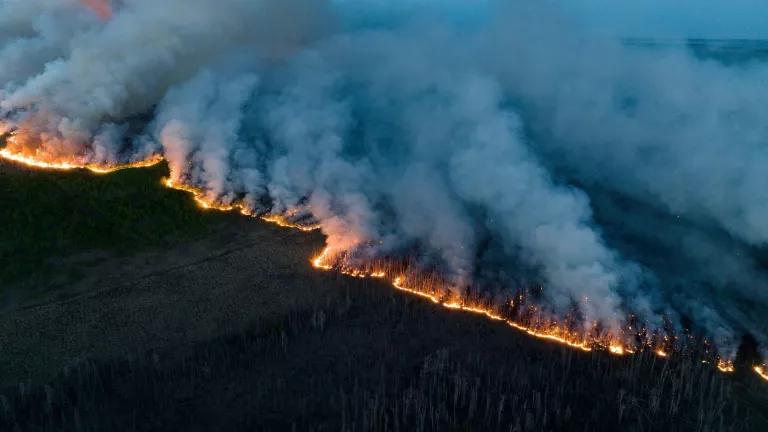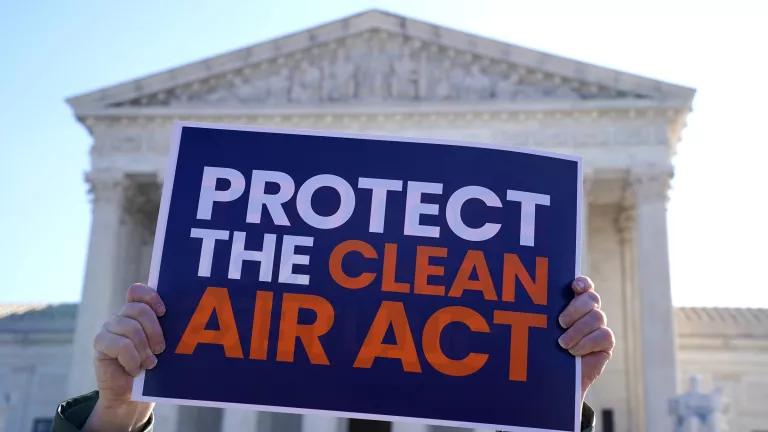Sneezing and Wheezing
How climate change could increase ragweed allergies, air pollution, and asthma: 2015 update
2014 was the hottest year on Earth since recordkeeping began in 1880, and ten of the previous warmest years on record occurred since 2001. The scientific consensus is that climate change is the driving force behind these rising temperatures. Scientific studies have also shown that our changing climate could favor the formation of more ozone smog in some areas and increase the production of allergenic pollen such as that released by the ragweed plant, the principal source of pollen associated with allergic rhinitis.
This is bad news for allergy sufferers and asthmatics because both ragweed pollen and high levels of ozone smog can trigger asthma attacks and worsen allergic symptoms in adults and children. Moreover, studies show that people exposed to both ragweed allergens and ozone are likely to become more ill than people exposed to just one of the two. These negative health effects are expected to worsen if carbon dioxide (CO2) concentrations keep rising and climate change continues unchecked.
In order to understand the scope of this problem and who will be affected by it, the Natural Resources Defense Council has updated its groundbreaking 2007 Sneezing and Wheezing report, which mapped, for the first time, areas within the United States where ragweed and unhealthy ozone pollution overlap. This new report shows that one in three Americans, 109 million people in our country, are the most exposed to worsening respiratory allergies and asthma associated with climate change. Together, the findings that so many Americans face this double-whammy health risk provide evidence of the urgent need for taking action now to reduce the health threats posed by climate change.
Allergies and Asthma: Serious Health Threats on the Rise
An estimated 50 million Americans today have some type of nasal allergy. In 2012, an estimated 7.5 percent of adults and 9.0 percent of children were diagnosed with seasonal allergic rhinitis (or hay fever), whose symptoms include inflammation and irritation of the nose, sinuses, throat, eyes, and ears as well as sneezing, runny nose, and itchy eyes. Allergies can seriously affect health as well as educational and business productivity: It is estimated that more than 3.8 million work and school days are missed each year due to seasonal ragweed pollen allergies.
In 2011, some 26 million children and adults in the United States had asthma, a chronic lung disease in which air passages become inflamed and constricted, making breathing difficult. Of this number, 7.1 million were under 18 years of age, and 13.2 million had at least one asthma attack. While some asthma symptoms can be treated, the disease cannot be cured. Allergies are among the factors that can trigger an asthma attack, and it is believed that worldwide, about 70 percent of asthmatics also have allergic rhinitis. Some researchers have voiced concerns about children's health being threatened by a warming planet and have suggested that the observed rise in asthma cases could be an early impact of climate change.
Climate Change Worsens Respiratory Health
The severity of both allergies and asthma is closely linked to environmental conditions, particularly air quality. Climate change and rising CO2 levels are projected to worsen air quality and could threaten human health in many areas due to increased levels of allergenic pollen and groundlevel ozone. Scientific studies have found that allergenic pollen production increases as CO2 concentrations and temperatures climb. For example, ragweed plants have been shown to grow bigger and produce more pollen when levels of CO2 increase and to produce pollen for longer seasons. These plants have also shown increased tolerance to high ozone levels.
Government Agencies Must Protect Communities from the Health Effects of Climate Change Driven by Carbon Pollution
Many of the sources of ozone-producing chemicals -- industrial facilities, electric power plants, and motor vehicles -- also emit the carbon pollution that drives climate change. Therefore, minimizing emissions from these sources can help reduce ozone air pollution and climate change, helping to create better air quality conditions today and a cooler, healthier environment in the future. In the summer of 2015, the U.S. Environmental Protection Agency (EPA) is expected to finalize the Clean Power Plan, which will establish the first-ever national limits on carbon pollution from power plants -- currently the largest source of carbon pollution in the United States. The Clean Power Plan is a major step forward to curb climate change and to reduce emissions that create ground-level ozone.



